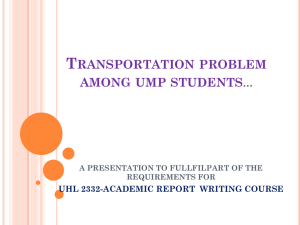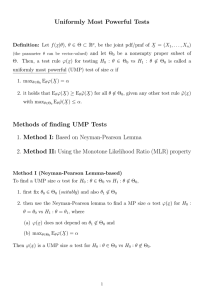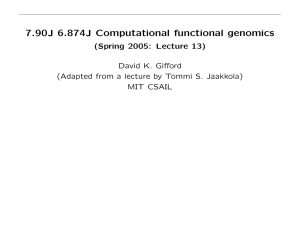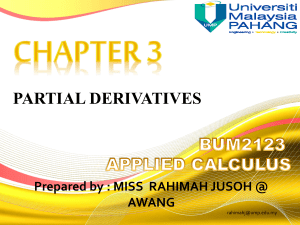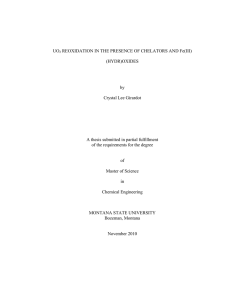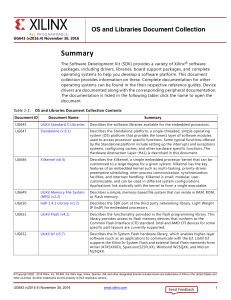PS2 Q1i answer David Ronayne 24 February 2012
advertisement
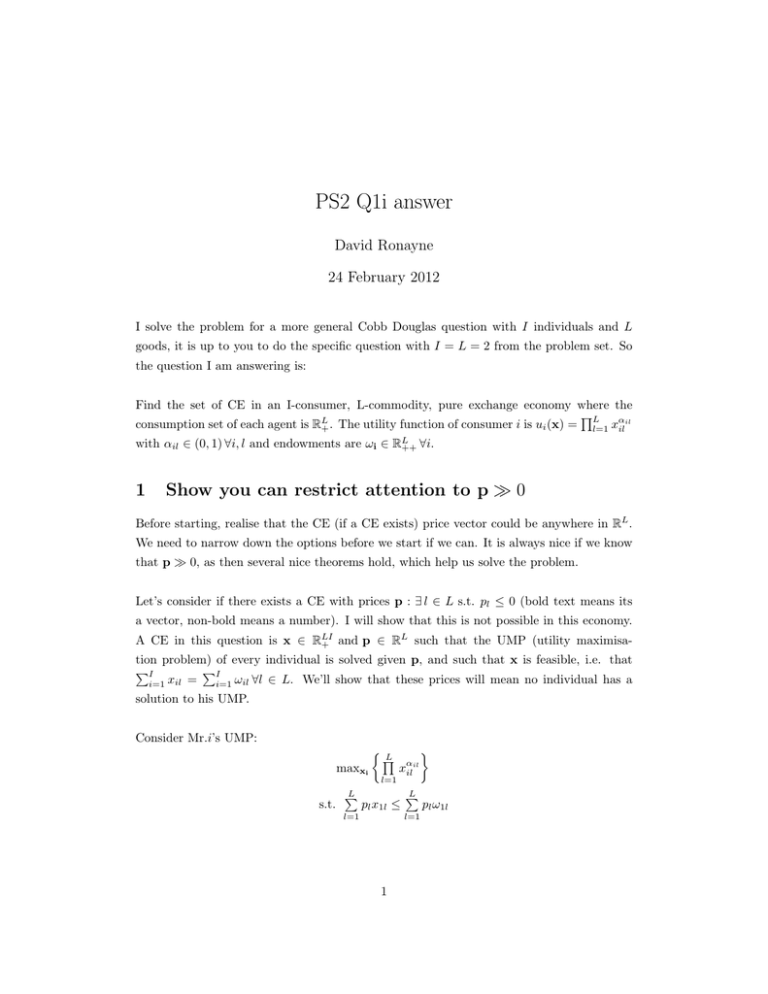
PS2 Q1i answer David Ronayne 24 February 2012 I solve the problem for a more general Cobb Douglas question with I individuals and L goods, it is up to you to do the specific question with I = L = 2 from the problem set. So the question I am answering is: Find the set of CE in an I-consumer, L-commodity, pure exchange economy where the QL αil consumption set of each agent is RL + . The utility function of consumer i is ui (x) = l=1 xil with αil ∈ (0, 1) ∀i, l and endowments are ωi ∈ RL ++ ∀i. 1 Show you can restrict attention to p 0 Before starting, realise that the CE (if a CE exists) price vector could be anywhere in RL . We need to narrow down the options before we start if we can. It is always nice if we know that p 0, as then several nice theorems hold, which help us solve the problem. Let’s consider if there exists a CE with prices p : ∃ l ∈ L s.t. pl ≤ 0 (bold text means its a vector, non-bold means a number). I will show that this is not possible in this economy. L A CE in this question is x ∈ RLI such that the UMP (utility maximisa+ and p ∈ R tion problem) of every individual is solved given p, and such that x is feasible, i.e. that PI PI i=1 ωil ∀l ∈ L. We’ll show that these prices will mean no individual has a i=1 xil = solution to his UMP. Consider Mr.i’s UMP: maxxi L Q l=1 s.t. L P il xα il pl x1l ≤ l=1 L P l=1 1 pl ω1l Now consider the allocation x̃1l0 = ω1l0 ∀l0 6= l, for sure he can do this as he’s just consuming 0 his endowment of these commodities, note that because ωi ∈ RL ++ ∀i =⇒ x̃1l0 > 0 ∀ l 6= l. The budget constraint (cancelling terms) now becomes pl xil ≤ pl ωil , only 1 commodity left in there now. Now notice that (compute it to check): ∂ui >0 ∂xil xil0 =x̃il0 ∀l0 6=l In other words, he always demands more of commodity l at this level of the other commodities, hence his UMP have no solution (he’d like ∞). He is not stopped by his budget constraint precisely because pl ≤ 0. Hence there cannot be a CE in this economy if ∃ l ∈ L : pl ≤ 0. Notice that we did this proof for arbitrary l ∈ L, so it does not matter which good you consider, just that there is at least one non-positive price. Hence, we know that if there is a CE, there cannot be any non-positive prices or all the UMP’s would have no solution, so any CE must be where p 0. Rest of answer to follow, but try to do it this weekend if you can. . . 2


